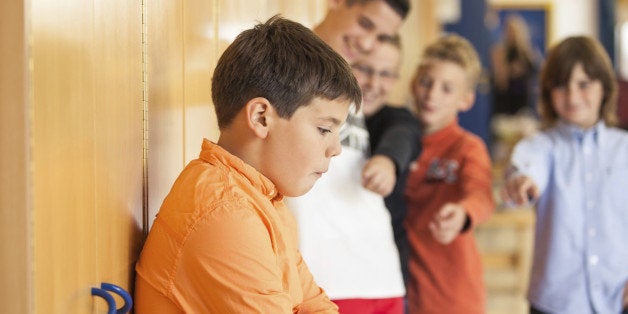
Discussions on bullying can suck the calm from a room full of otherwise happy people. The sudden flair of angst and even anger is testament to the hurt, offense and helplessness many feel when faced with the issue of bullying. And rightly so. Bullying continues to be a serious problem in many of our schools.
People trend toward one of two camps, sometimes both, in the bullying conversation. Either they focus on the individuals involved, the "victim" or the "bully," or focus on the environment such as the schools.
While both approaches are necessary I think it's important to point out an extremely important distinction between the two. Focusing on the victim or bully might clear up a particular incident, but it does nothing to remedy the environment that allowed the bullying to occur. Which means bullying will happen again, and most likely is happening in many subtle and often undetected ways.
Our schools represent all segments of society. Sad to say some folks don't know how to teach their kids appropriate social/emotional skills, or even burden them with abuse and neglect. These kids, they're in our schools.
That bullying behavior will show up on occasion is not surprising. That bullying behavior would be successful, even on an initial attempt, is not inevitable. That it would persist and become a thing to be feared by any child is unacceptable and yes, completely avoidable.
Our schools can foster a culture of bullying, or a culture of respect. Fostering a culture of respect doesn't happen accidentally; it takes determined and consistent effort.
Kids will act out what they've internalized. It's not that moment, but what happens in response to that moment that determines the kind of environment our kids get.
When our schools don't see what's going on because they're not actively looking, or don't have an immediate and weighty response that separates out and appropriately consequences the bully, they contribute to a bullying culture.
When our schools don't intentionally foster an environment of inclusion and respect, and that means contributing the time and money to create it, they contribute to a bullying culture.
When our schools aren't aware of the behaviors that pre-date bullying, such as social isolation, and act to address these behaviors, they contribute to a bullying culture.
When our schools don't make it clear that bullying is everyone's problem, and teach both kids and adults ways to contribute to its isolation and eradication, they contribute to a bullying culture.
Yes, we need to teach our kids the many ways they can keep themselves safe. But most importantly we need to teach, and be able to teach, that they can come to adults for help, and truly expect there's real help to be had.
One of the best resources I've read on bullying is How to Bullyproof Your Classroom by Caltha Crowe (a responsive classroom resource).
"Bullying -- What's the Problem?" is written in response to the passionate reader comments to Playground Bullying and my Ex.
Want Eva to respond to your life dilemma? Click here to contribute to The Eavesdropping Project.
Follow Eva on Twitter.